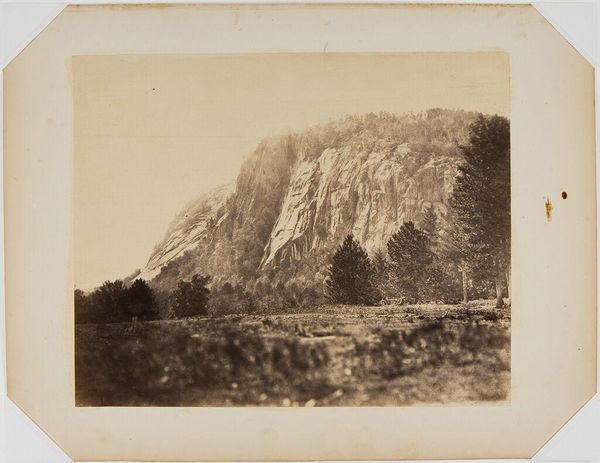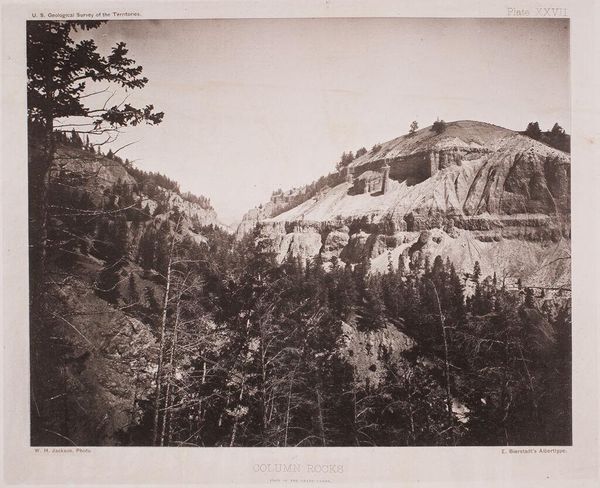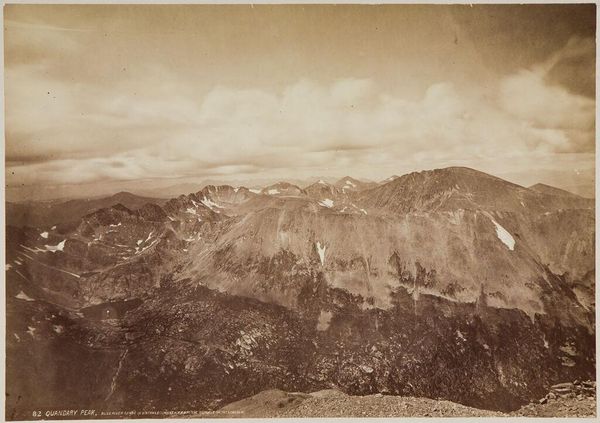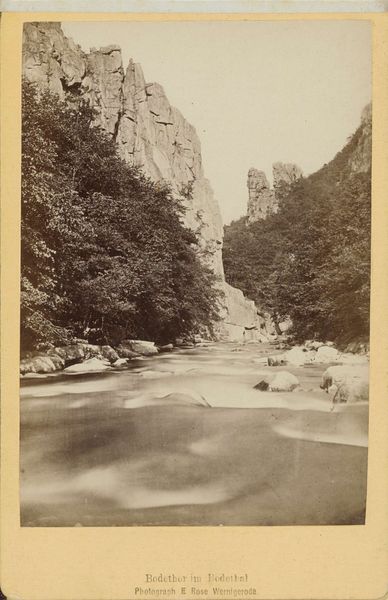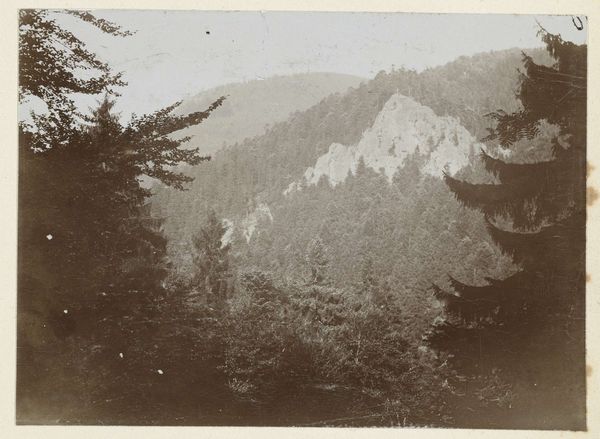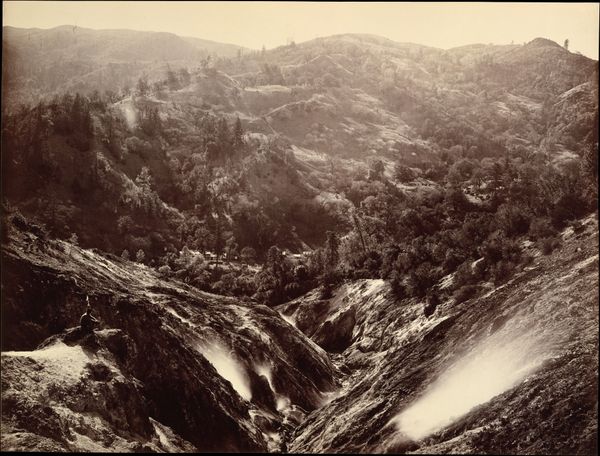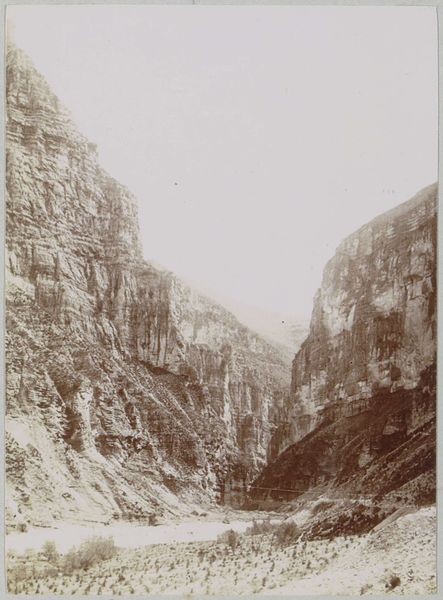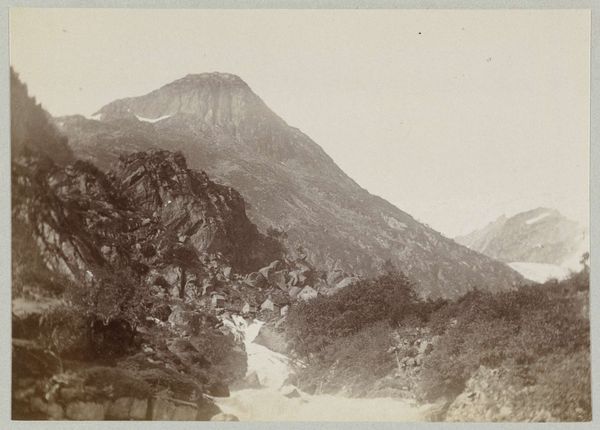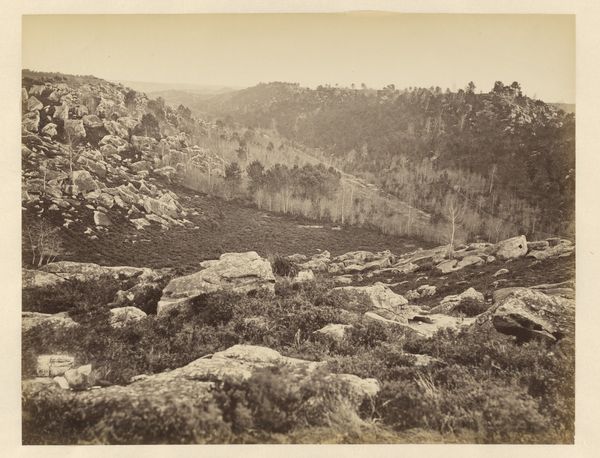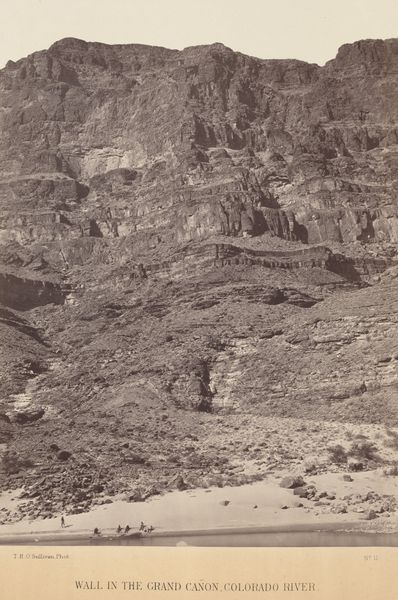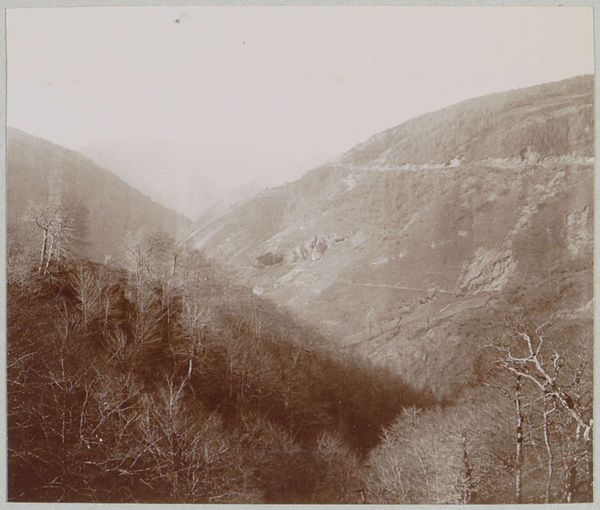
photography, albumen-print
#
landscape
#
luminism
#
charcoal drawing
#
photography
#
mountain
#
orientalism
#
hudson-river-school
#
albumen-print
#
realism
Dimensions: Image: 42.1 x 50.8 cm (16 9/16 x 20 in.), arch-topped Mount: 53.7 x 66.7 cm (21 1/8 x 26 1/4 in.)
Copyright: Public Domain
Editor: So this is Carleton Watkins' "Cathedral Rock," an albumen print from 1861. It’s quite imposing, the sheer scale of the rock face is really striking. What draws your eye when you look at it? Curator: What strikes me is the socio-political context in which this image was produced. Consider the rapid expansion westward during the mid-19th century and how photography played a role in shaping perceptions of the American landscape. What kind of statement did such a photograph create for viewers at the time, back East? Editor: It’s easy to imagine that it fueled the concept of Manifest Destiny and western expansion, right? Like a call to the adventurers? Curator: Precisely. The sheer monumentality of Watkins' composition—and the very real labor required to haul the camera and chemicals to that vantage point—frames the landscape as something to be conquered and, of course, possessed. Note how it appeared not just as a sublime landscape, but in world exhibitions, civic fairs and even commercial galleries. How might displaying it like that transform it? Editor: Makes it… official? Part of a narrative of progress? Not just something beautiful to look at. Were these kinds of landscapes politically charged images in their time? Curator: Absolutely. Watkins, and photographers like him, weren't simply documenting, they were actively participating in constructing an idea of America. And that idea had very real consequences for Indigenous populations and the environment, for example. What do you make of how Watkins composes the photograph, in relationship to that social history? Editor: It seems to be making nature grander than people - suggesting a right to be admired? It gives a sort of implicit green light? I will definitely look at such imagery more carefully moving forward. Curator: Exactly. The way in which these images were used highlights the intersection of art, power, and national identity, prompting important questions about whose stories get told, and how.
Comments
No comments
Be the first to comment and join the conversation on the ultimate creative platform.
